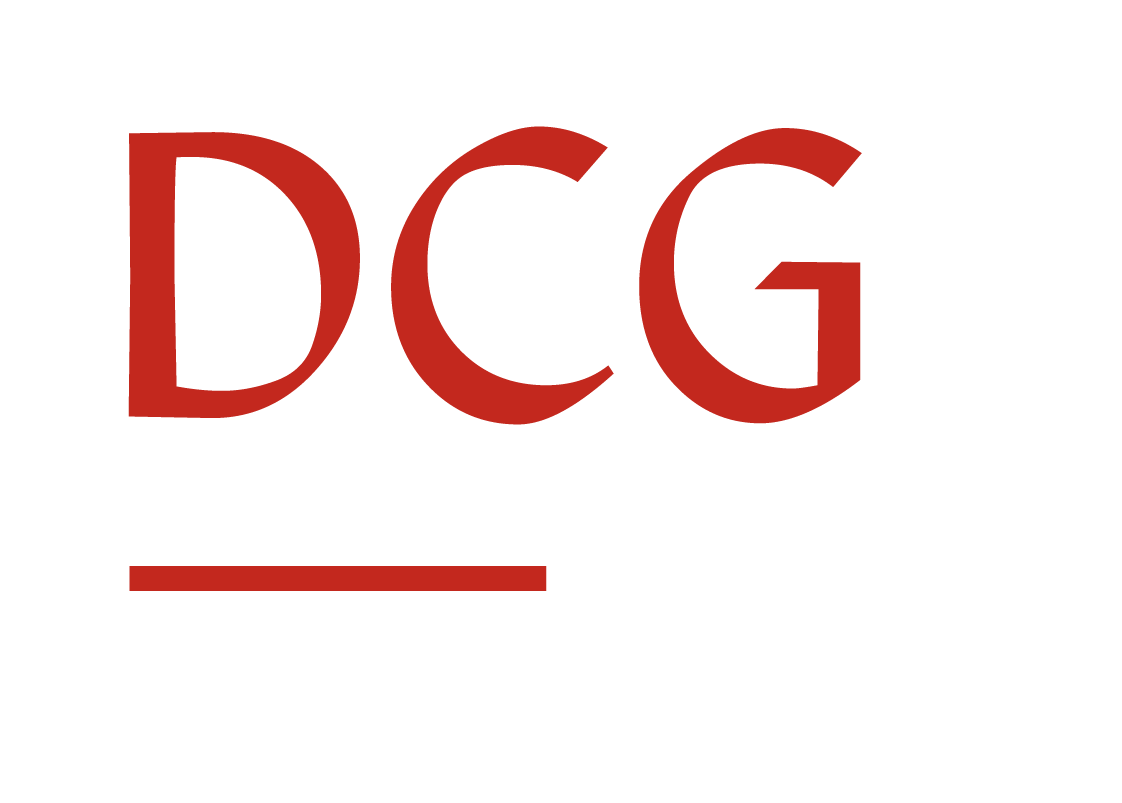



Freiberg was founded more than 850 years ago. It went through turbulent development due to its fast development of the mining industry. Also, trade had an increasing importance for Freiberg and it became the economic centre for the margravate Meißen in the Middle Ages. Freibergs mining industry went through four main episodes of upturn from the 14th century until the middle of the 20th century.
The TU Bergakademie Freiberg has been founded 1765 and represents major event it the cities history. It was one of the first universities for mining and earth sciences and helping the city to gain international reputation. The mining industry has been the basis for the development of huge economic, scientific and cultural variety. The cultural landscape of Freiberg is both traditional and modern. Freiberg offers leisure and sport facilities, museums and parks and biking ways.
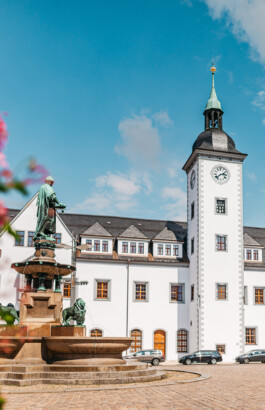

The city of Freiberg
Although a relatively small city with only 40.000 inhabitants, Freiberg offers a lot of amenities for its inhabitants. In the city, people can do almost all errands by foot but also with the car, bus or bike. Freiberg is a green city with lots of parks, clean and clear air and during the night you can see the many stars in the night sky.
Events in Freiberg:
Mountain Town Festival (June)
Freiberg Summer Nights – different Festivals, Concerts & Open Air
Cinema in the Castle
Freiberg Night Shi" – Festivals in Bars (September)
Silbermann Days – Classical Concerts (September)
Christmas Market (December)
1 Rathaus_Blumen, ©
2 Silberstadt Freiberg, © Paul Schmidt
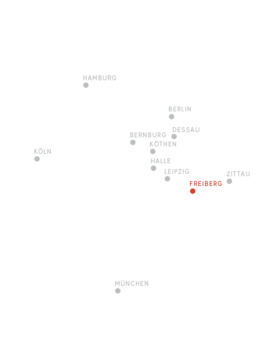

3 Analysis, © Sibylle Loebnitz
4 Lab Thermal Analysis, © Sibylle Loebnitz
5 Analysis, © Sibylle Loebnitz
6 Students, © Sibylle Loebnitz
7 Metall, © Uni Freiberg

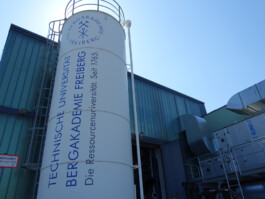
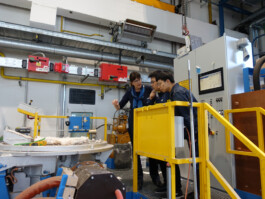
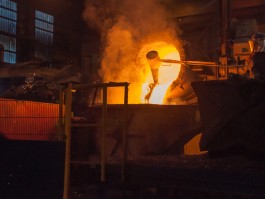
Study at TU Bergakademie Freiberg
Being a University of Resources, the TU Bergakademie focuses comprehensively on securing the supply of natural resources along the entire added value chain. It covers the spectrum from the exploration for new deposits, the low impact, environmentally sound extraction of the raw materials as well as the development of alternative energy technologies and efficient materials right up to the recycling process. The basic idea of sustainable development always remains at the forefront. The TU Bergakademie Freiberg thus provides society with the basis for an environmentally compatible supply of resources, which are essential for universal economic growth.
Researchers in Freiberg use cooperative relationships with industry representatives on the regional and national level as well as with international businesses to carry out fundamental research activities that have practical relevance. For years, the professors of the TU Bergakademie Freiberg have ranked among the absolute elite in Germany in terms of third-party funds. The focus on a sustainable material and energy economy in research and education along with the four core fields Geo, Material, Energy and Environment give the university its very distinct resource profile.
The Bergakademie takes its claim of actively meeting society’s ongoing challenges as seriously today as it did upon its founding approximately 250 years ago. It was at this University of Resources that Ferdinand Reich and Theodor Richter discovered the element Indium and Clemens Winkler found the element Germanium in Freiberg’s ore deposits. Abraham Werner established the scientific study of mineralogy and geology. Also in Freiberg, Wilhelm Lampadius developed the principle of gas lighting for the European continent.
The TU Bergakademie has 5,000 Students, 6 Faculties, 86 Professors and 2 Collaborative Research Centers.
Internationally Renowned Collections for Research and Teaching. The nearly 40 scientific collections of the TU Bergakademie Freiberg represent not only a vital component for research and teaching, but also a unique attraction for visitors. In the form of a donation in 2004, the university received one of the largest and most outstanding private collections of minerals to add to its Mineralogical Collection.
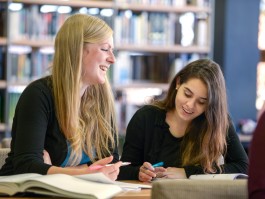
8 Students, © TU Bergakademie Freiberg
9 Dormitory Winklerstrasse, © Sibylle Loebnitz
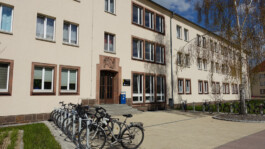


Freiberg was founded more than 850 years ago. It went through turbulent development due to its fast development of the mining industry. Also, trade had an increasing importance for Freiberg and it became the economic centre for the margravate Meißen in the Middle Ages. Freibergs mining industry went through four main episodes of upturn from the 14th century until the middle of the 20th century.
The TU Bergakademie Freiberg has been founded 1765 and represents major event it the cities history. It was one of the first universities for mining and earth sciences and helping the city to gain international reputation. The mining industry has been the basis for the development of huge economic, scientific and cultural variety. The cultural landscape of Freiberg is both traditional and modern. Freiberg offers leisure and sport facilities, museums and parks and biking ways.


The city of Freiberg
Although a relatively small city with only 40.000 inhabitants, Freiberg offers a lot of amenities for its inhabitants. In the city, people can do almost all errands by foot but also with the car, bus or bike. Freiberg is a green city with lots of parks, clean and clear air and during the night you can see the many stars in the night sky.
Events in Freiberg:
Mountain Town Festival (June)
Freiberg Summer Nights – different Festivals, Concerts & Open Air
Cinema in the Castle
Freiberg Night Shi" – Festivals in Bars (September)
Silbermann Days – Classical Concerts (September)
Christmas Market (December)
1 Rathaus_Blumen, ©
2 Silberstadt Freiberg, © Paul Schmidt


3 Analysis, © Sibylle Loebnitz
4 Lab Thermal Analysis, © Sibylle Loebnitz
5 Analysis, © Sibylle Loebnitz
6 Students, © Sibylle Loebnitz
7 Metall, © Uni Freiberg




Study at TU Bergakademie Freiberg
Being a University of Resources, the TU Bergakademie focuses comprehensively on securing the supply of natural resources along the entire added value chain. It covers the spectrum from the exploration for new deposits, the low impact, environmentally sound extraction of the raw materials as well as the development of alternative energy technologies and efficient materials right up to the recycling process. The basic idea of sustainable development always remains at the forefront. The TU Bergakademie Freiberg thus provides society with the basis for an environmentally compatible supply of resources, which are essential for universal economic growth.
Researchers in Freiberg use cooperative relationships with industry representatives on the regional and national level as well as with international businesses to carry out fundamental research activities that have practical relevance. For years, the professors of the TU Bergakademie Freiberg have ranked among the absolute elite in Germany in terms of third-party funds. The focus on a sustainable material and energy economy in research and education along with the four core fields Geo, Material, Energy and Environment give the university its very distinct resource profile.
The Bergakademie takes its claim of actively meeting society’s ongoing challenges as seriously today as it did upon its founding approximately 250 years ago. It was at this University of Resources that Ferdinand Reich and Theodor Richter discovered the element Indium and Clemens Winkler found the element Germanium in Freiberg’s ore deposits. Abraham Werner established the scientific study of mineralogy and geology. Also in Freiberg, Wilhelm Lampadius developed the principle of gas lighting for the European continent.
The TU Bergakademie has 5,000 Students, 6 Faculties, 86 Professors and 2 Collaborative Research Centers.
Internationally Renowned Collections for Research and Teaching. The nearly 40 scientific collections of the TU Bergakademie Freiberg represent not only a vital component for research and teaching, but also a unique attraction for visitors. In the form of a donation in 2004, the university received one of the largest and most outstanding private collections of minerals to add to its Mineralogical Collection.

8 Students, © TU Bergakademie Freiberg
9 Dormitory Winklerstrasse, © Sibylle Loebnitz

